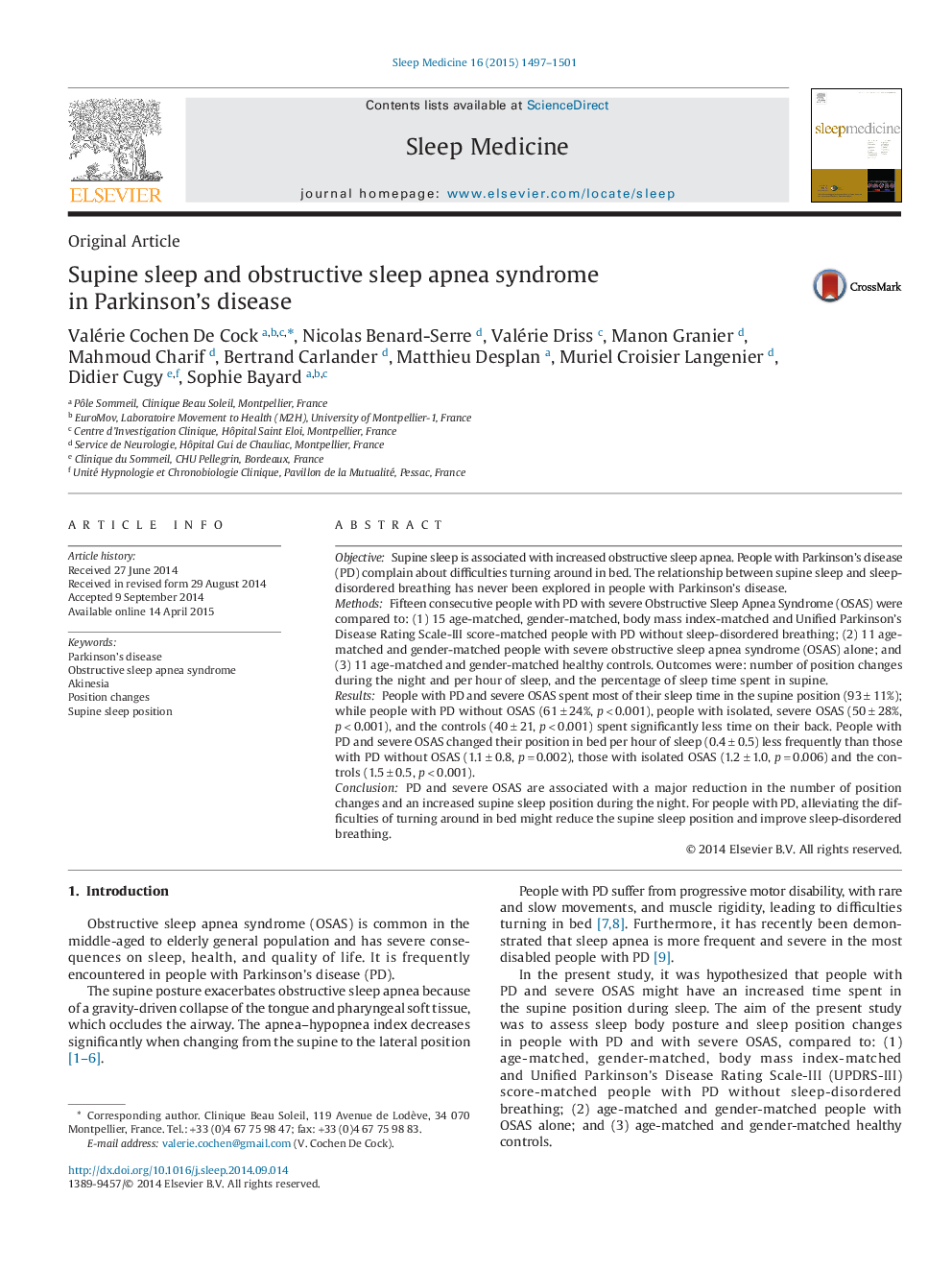| کد مقاله | کد نشریه | سال انتشار | مقاله انگلیسی | نسخه تمام متن |
|---|---|---|---|---|
| 6060431 | 1200227 | 2015 | 5 صفحه PDF | دانلود رایگان |
- The association between supine sleep position and increased obstructive sleep apnea is well known.
- In the present study, severe obstructive sleep apnea syndrome (OSAS) in people with Parkinson's disease is associated with a reduced number of position changes at night.
- In the present study, severe OSAS in people with PD is associated with an increased supine sleep position at night.
- For people with PD, treating the difficulties of turning around in bed may be helpful.
ObjectiveSupine sleep is associated with increased obstructive sleep apnea. People with Parkinson's disease (PD) complain about difficulties turning around in bed. The relationship between supine sleep and sleep-disordered breathing has never been explored in people with Parkinson's disease.MethodsFifteen consecutive people with PD with severe Obstructive Sleep Apnea Syndrome (OSAS) were compared to: (1) 15 age-matched, gender-matched, body mass index-matched and Unified Parkinson's Disease Rating Scale-III score-matched people with PD without sleep-disordered breathing; (2) 11 age-matched and gender-matched people with severe obstructive sleep apnea syndrome (OSAS) alone; and (3) 11 age-matched and gender-matched healthy controls. Outcomes were: number of position changes during the night and per hour of sleep, and the percentage of sleep time spent in supine.ResultsPeople with PD and severe OSAS spent most of their sleep time in the supine position (93â±â11%); while people with PD without OSAS (61â±â24%, pâ<0.001), people with isolated, severe OSAS (50â±â28%, pâ<0.001), and the controls (40â±â21, pâ<0.001) spent significantly less time on their back. People with PD and severe OSAS changed their position in bed per hour of sleep (0.4â±â0.5) less frequently than those with PD without OSAS (1.1â±â0.8, pâ=â0.002), those with isolated OSAS (1.2â±â1.0, pâ=â0.006) and the controls (1.5â±â0.5, pâ<0.001).ConclusionPD and severe OSAS are associated with a major reduction in the number of position changes and an increased supine sleep position during the night. For people with PD, alleviating the difficulties of turning around in bed might reduce the supine sleep position and improve sleep-disordered breathing.
Journal: Sleep Medicine - Volume 16, Issue 12, December 2015, Pages 1497-1501
